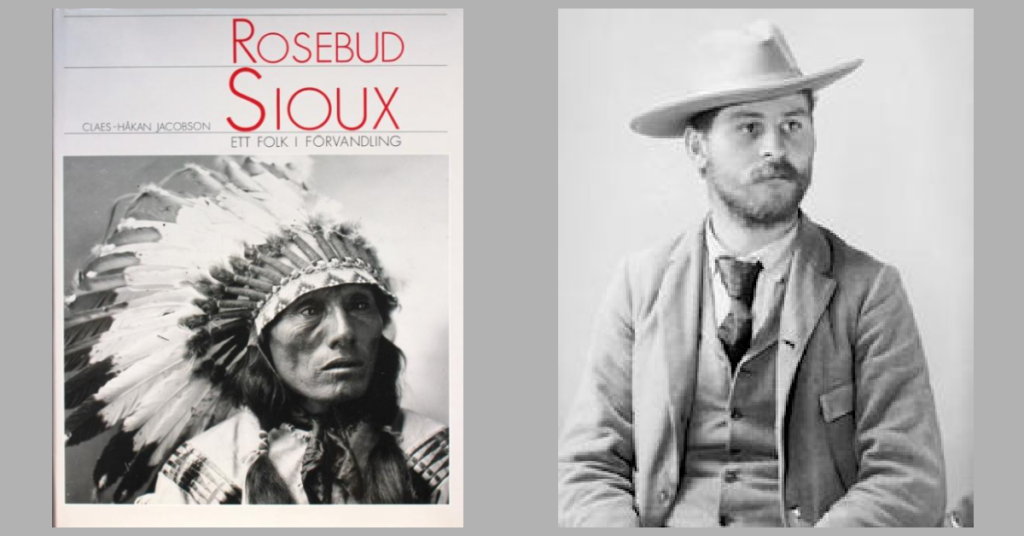Swedish Photographer’s Historic Exhibit Gifted to Siċaŋġu Lakota
July 13, 2024

“We look forward to using the collection to support and expand our Lakota education goals.”
– Keli Brings Three White Horses, Curator of the Siċaŋġu Heritage Center
If a picture is worth a thousand words, one photographic exhibit recently gifted to the Rosebud Sioux Tribe is priceless. Fulfilling the request of her late husband, Swedish photo-historian Claes-Hakan Jacobson, Eva Anderson recently donated the historic “Rosebud Sioux – A Lakota People in Transition” photographic exhibit to Sinte Gleska University in Mission.
The exhibit, on display at the Great Plains Art Institute until January 2025, will be the focus of SDHC’s weekly online conversation program, Brainstorming: The Human Connection, on Thursday, July 18 from 10:30-11:30 am CT. To join the program, click here.
Reflecting on the origins of the project, Eva Anderson said, “He (Claes) actually started out researching Swedes who were pioneer photographers in the United States, and in his research, he came across John Anderson.”
The late Swedish photographer John Alvin Anderson (1869-1948) lived along the South Dakota-Nebraska border and collected images of the Siċaŋġu Oyáte, which translates to “Burnt Thighs Nation,” from about 1885-1930. Notable photographs include He Dog, Fool Bull, Iron Shell, and Crow Dog. The exhibit contains 105 large, framed photographs, along with storyboards and books.
Through their collaboration, John Alvin Anderson and the Jacobsons sought to educate people on two continents – Europe and North America – about two distinct cultures (European and Lakota). In his 2004 book, Rosebud Sioux: A Lakota People in Transition, Claes Jacobson stated that Anderson’s photographs “focus on important aspects of their Lakota culture and ways of life which at the time were strictly monitored by … the United States Federal Government.”
Siċaŋġu Heritage Center Curator Keli Brings Three White Horses is enthusiastic about what Anderson’s donation means to the community.
“It is a really big deal for us. It is going to help not only the museum but Sinte Gleska University and the Siċaŋġu as a whole,” she said. “It has already brought our museum communities together because we want to be sure we preserve it properly, and everybody is really excited.”
For more information, contact the Great Plains Art Institute at (605) 856-8123 or the SDHC office at (605) 688-6113.
Learn more about humanities programming in South Dakota by signing up for SDHC e-Updates!